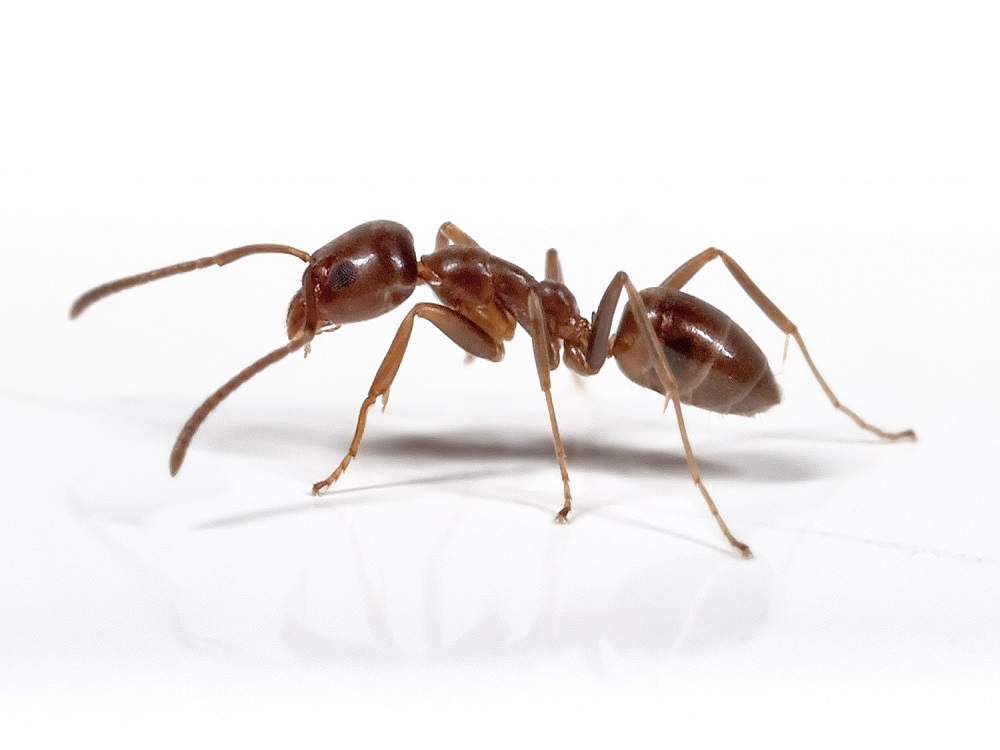Argentine Ant
Family Name
Linepithema Humile
Characteristics
Type:
Crawling – Biting
Size:
Workers of this species are about 0.125 inch in length.
Colour:
Varies from dark brown to black and the body is often shiny in appearance.

Behaviour:
The colonies of Argentine ants can grow quite large and contain tens of thousands of workers and numerous queens. Each colony will be divided into sub-colonies located in various suitable harbourages connected by established trunk trails. These sub-colonies will number from a few hundred to thousands of individuals. Since members of two separate colonies are not aggressive toward each other, colonies will often combine with one another. This creates huge super-colonies that may extend over several properties. Argentine ants are very aggressive and will drive out native species of ants, creating an environment where they are literally the “king” of the anthill, so to speak. Their primary food source during the warm months is the sweet honeydew produced by aphids and mealybugs. The presence of fruit trees, roses and other plants that attract aphids often contributes to Argentine ant infestations.
Habitats
Argentine ants reside outdoors, usually in shallow nests in the soil beneath a stone, board or any other item that provides protection. Small, medium or large sub-colonies will locate themselves in piles of lumber, bricks or debris; in landscape mulch; behind brick and stone veneer; within and under insulation; and in wall voids or any other suitable void. Argentine ants are the most common invaders of homes.
Tips for Control
The Argentine ant can be nearly impossible to control, especially during midsummer. At best, regular treatments keep as few ants as possible from entering the home or business.
General tips for limiting ant infestations include:
Eliminating piles of lumber, bricks or other debris that could serve as a nesting site for ants.
Keeping landscape mulch less than 2 inches thick and at least 12 inches away from foundations.
Ensuring the sprinkler system does not spray directly onto the foundation.
Sealing as many cracks in the building’s exterior as possible.
Keeping tree and shrub branches trimmed to prevent touching the home.
Considering re-landscaping to avoid using plants that are prone to aphids and similar insects. At the very least, treat such plants for aphids regularly. A tree/shrub company can be helpful with this task.


